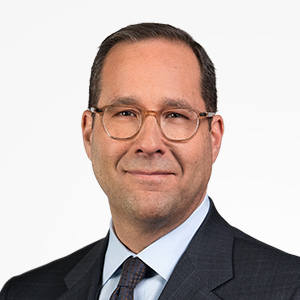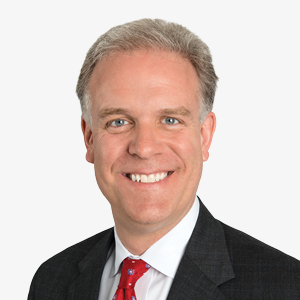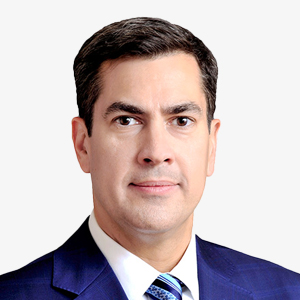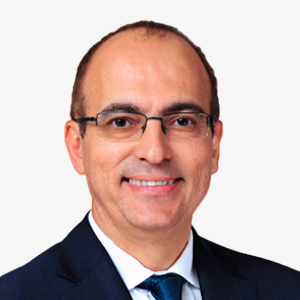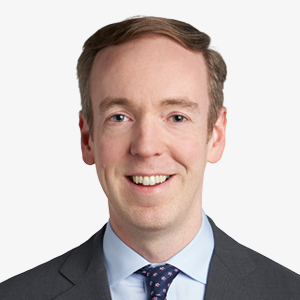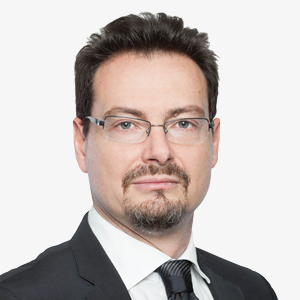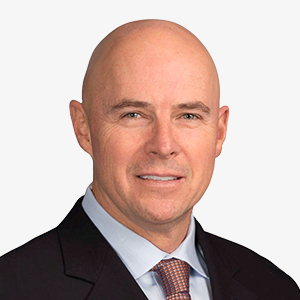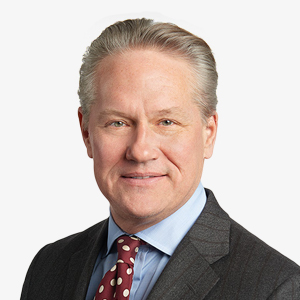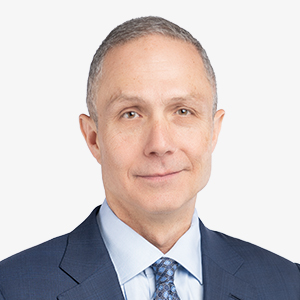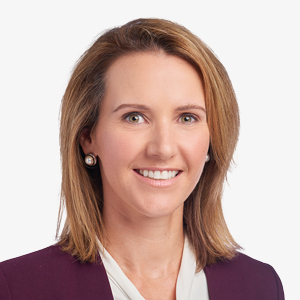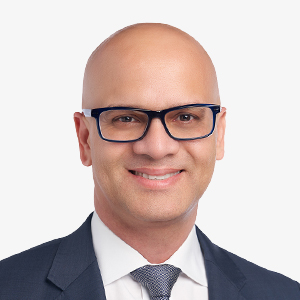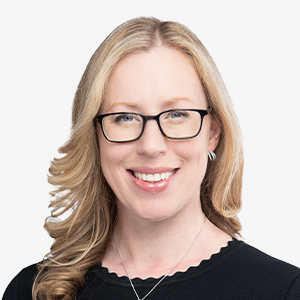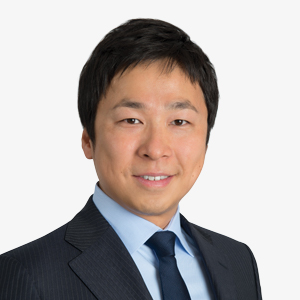Asset Allocation Committee Outlook
—Erik L. Knutzen, CFA, CAIA, Chief Investment Officer—Multi-Asset Class
—Niall O'Sullivan, Chief Investment Officer, Multi Asset Strategies – EMEA
The story of 2023 has been the story of a U.S. recession deferred while the tourniquet of tightening monetary policy has begun to bite elsewhere—Europe in particular. U.S. consumers and corporations entered the year with robust balance sheets that made them surprisingly resilient to higher rates, while a shift from consumer-oriented support to industrial stimulus is preserving the fiscal impetus. Europe’s growth is weakening and the U.S. consumer may be tiring, but ultimately, the more time the economy has to adjust to the slowdown, the milder it is likely to be. Even so, the Asset Allocation Committee (“the AAC” or “the Committee”) retains the neutral overall outlook it adopted last quarter, while leaning further into its quality-oriented, “long-the-strong” stances at the margins and within asset classes. This is because markets appear to be focusing increasingly on the negatives of higher rates, sticky inflation, debt sustainability, tighter financial conditions and ebbing liquidity that have long dominated our medium-term views. Most notably, core government bond yields have broken out of their 2023 ranges, potentially shaking a key support for equity markets. In both equities and credit, we emphasize high quality. We prefer U.S. large caps and Japan to small caps, Europe and emerging markets. On yield curves, we think recent adjustments have created value for maturities of between two and seven years across developed markets, and prefer those maturities over longer-dated bonds in most countries—especially those where we expect investors to demand a higher risk premium on concerns about fiscal and debt sustainability. Cash remains a high-yielding haven as the market seeks a new equilibrium in rates and greater clarity on the potential for a global growth slowdown.
The economic cycle is turning, but slowly.
In Europe, a manufacturing-led economy that is sensitive to higher interest rates and highly exposed to China has spent much of the year on the edge of recession. In China, the initial optimism that greeted the lifting of pandemic restrictions has given way to structural concerns about its growth model: many had expected China to stimulate its economy, but in the event, it has been constrained by concerns about debt sustainability and fragility in its financial system.
By contrast, the world’s largest economy, with its resilient, services-oriented jobs market and robust consumer, has appeared increasingly capable of achieving a “soft landing” or “immaculate disinflation.” The fiscal impulse also remains strong, moving smoothly from the consumer-oriented fiscal support of the pandemic to a multi-faceted, industry-oriented stimulus for the post-pandemic, energy-transition era.
In one sense, this is all a matter of timing. Higher sensitivity to rates and China means the European cycle is simply turning a few months in advance of the U.S. cycle. Savings depletion means that U.S. consumption growth is likely to slow to the level of wage growth over the next couple of quarters, and perhaps a little lower should we see more weakness in the jobs and housing markets. Recent weakness among small-cap and regional bank stocks suggest that the U.S. economy may not be as strong as it seems.

But timing is important. One reason U.S. growth has been so resilient this year is that its corporations and consumers had bought themselves a lot of adjustment time by shoring up their balance sheets through 2021 and 2022. Many termed-out their fixed rate debt and built cash buffers, which are now paying more than 5% a year. The longer the slowdown is held off, the more time they have to consolidate those preparations. This is especially the case in the corporate sector, which is making technology investments to enhance productivity and secure future growth, increasingly with fiscal support. We may still endure an economic slowdown, but the more it is delayed, the milder it is likely to be.
Despite this relatively benign view on the world’s largest economy, the AAC retains the neutral overall outlook it adopted last quarter, along with its quality-oriented, long-the-strong and short-the-weak stances at the margins and within asset classes.
That is partly because the conflicting signals from our shorter- and medium-term outlooks, which informed our move to neutral last quarter, have still not entirely resolved. Where they have begun to resolve, it has not been in favor of the third-quarter dynamics of still abundant market liquidity and a broadening of the equity market rally. Instead, we have seen markets turn their focus toward our medium-term expectations for a negative impact from higher rates, sticky inflation, tighter financial conditions, and ebbing liquidity: after putting in a further 4% rally following our third-quarter Outlook, as we anticipated it might, the S&P 500 Index has now retrenched to below its July starting level.
Another reason is the developing dispersion of central bank reaction functions, as they all tend toward a “data-driven” approach and local data begins to diverge. The past few weeks have seen, for example, a “hawkish pause” from the Fed, a “dovish hike” from the European Central Bank (ECB), a dovish pause from the Bank of England and mixed signals on yield curve control from the Bank of Japan. That is a recipe for bond and currency market volatility that has the potential to leak into other markets. It also challenges the assumption that U.S. rates would revert lower relatively rapidly, thereby saving U.S. borrowers from some of the pressure that Europe is going through when they come to refinance.
And that brings us to our most significant reason for holding onto our more cautious views: the recent breakout of core government bond yields from their 2023 trading ranges. Coming into 2023, one of our key points was that equity markets were unlikely to regain a sure footing until the sell-off in bond markets had settled and bottomed out. The trading ranges that yields settled into in the first half of the year were one of the foundations for the equity bull market of the past 12 months. The breakout from those ranges has spooked investors, awakening fears of the downside stock-bond correlation they endured through 2022.

The causes are many and complex. As oil prices rise, investors have been reminded that the path back to 2% inflation is unlikely to be either smooth or rapid: the Fed is still projecting a policy rate above 3.5% at the end of 2025. The moderate bond market supply of the first half of the year has been steadily climbing, boosted by quantitative tightening. And then there is that surprisingly resilient U.S. growth.
Perhaps most important, however, and most structural, is a growing demand for more risk premium at the long end of yield curves that reflects not only this growing supply-and-demand imbalance, but also deeper concerns about sovereign debt sustainability and “fiscal dominance” over central bank policy.
One of the most persistent trends since the global financial crisis has been the deleveraging of the private sector and re-leveraging of the public sector, resulting in a tremendous transfer of wealth from governments to holders of financial assets. This reached new levels with pandemic fiscal support measures, but the general shift to more robust industrial policy and the specific demands of the clean-energy transition suggest that the trend has yet to culminate. With the U.S. facing an election year in 2024, there is little political appetite for lower spending and higher taxes. That raises the risk at the long end of sovereign yield curves—explaining how, for example, the German Bund yield has been climbing even as Germany struggles to avoid recession.
This return to disequilibrium in bond markets has reinforced our existing concerns about potential liquidity crunches and tightening financial conditions as we look into 2024.
Overall, that outlook leaves us with largely neutral views on risky assets, a tilt in favor of high-yielding cash and the relative safety of investment grade fixed income, and a tilt to hedged strategies and private assets that are somewhat insulated from the potential volatility of the public markets.
In equities, we retain our neutral view on U.S. large caps, but emphasize quality and larger companies in all parts of the market. The ability to sustain and grow margins in an environment of sticky inflation, higher-for-longer rates and slowing growth will be a key marker of success in 2024, in our view. Within emerging market equities there is a preference for India’s market over China’s, as we believe current high valuations are still justified by the prospect of organic growth set against the broader global slowdown.
Our view on developed ex-U.S. markets remains neutral, but with a deepening preference for Japan over Europe. While Europe’s most recent hike will satisfy the hawks on the Governing Council, it threatens to tip the region into negative growth, irrespective of ECB President Christine Lagarde’s rhetoric. The Bank of Japan may adjust or ultimately abandon its yield curve control policy, but appears constrained to modest rate hikes by its high level of domestic debt, and in less need of hikes due to a lower level of inflation. That is likely to keep the yen suppressed, which in turn offers support to Japan’s equity market, alongside still moderate valuations and structural improvements in its corporate governance.
In fixed income, the Committee has distinct views on credit and duration.
Credit spreads have remained tight through much of 2023, partly due to robust corporate balance sheets characterized by large cash buffers and long-dated debt fixed at low rates, and partly due to technical demand for the higher yields on offer. We think that technical support will persist, and that credit stresses are much more likely to remain idiosyncratic than to spread into something more systematic. Nonetheless, Committee members from our Fixed Income team are beginning to see some weakness in consumer-facing and industrial issuers, and we therefore favor high quality companies in both investment grade and high yield (and would take profits from any subsequent spread tightening). Some areas of securitized credit still offer attractive value, in our view. Total returns from here are likely to owe much more to coupons than capital appreciation.
That said, the AAC has become more positive on duration, but specifically between the two- and seven-year maturity points on yield curves, where normalization over recent weeks has made yields competitive with cash again. The lack of similar yield moves further out on the curve, together with the threat of further adjustments higher due to debt sustainability, fiscal dominance and the need for more long-dated risk premium, make us much more cautious on maturities beyond seven years.

The Committee has become more positive on the two- to seven-year maturity part of the curve in non-U.S. developed market bonds, too: especially in countries that have tended to issue more debt, such as Japan, France, Italy and Spain, curves that were already less inverted than in the U.S. have normalized further, offering investors attractive yields (even when hedged back to U.S. dollars). Given ongoing caution on Japanese government bonds and longer-dated bonds in general, this is not enough to move us to a more neutral view overall.
The AAC has downgraded its view on emerging markets debt from overweight to neutral, mostly to reflect growing weakness among corporate issuers. Sovereigns and especially Latin America, are more attractive, in our view.
The Committee maintains an overweight view on hedged strategies, with a focus on non-traditional markets (such as insurance-linked strategies) and on approaches that seek either to insulate against or take advantage of market volatility (such as market-neutral, macro and options-based strategies that can demonstrate genuine diversification and little to no systematic market exposure).
Private markets also remain an overweight view, and we continue to favor approaches that provide liquidity to the ecosystem, whether that be capital solutions and co-investments that provide liquidity and capital for portfolio companies, or secondary-market strategies that provide liquidity to General and Limited Partners. Committee members from our Private Markets teams report an uptick in transaction activity after many quiet months, particularly for higher quality assets, as investors become more assured that valuations are holding up and more anxious to achieve distributions and recycle portfolios. These remain tentative green shoots, however, and for the most part investors are still holding investment for longer or resorting to the secondary market for liquidity, sustaining these opportunities for capital and liquidity providers.
We think these tilts to alternatives, together with high quality cash flows from cash, the intermediate part of bond and credit curves and select equities, can act as havens as the market seeks a new equilibrium in rates and greater clarity on the profile of the global growth slowdown.
The consensus on the AAC this quarter was for a relatvely mild “soft landing” in the U.S., in line with our thesis that the more the slowdown is delayed, the milder it is likely to be. Most Committee members feel that a technical recession—two consecutive quarters of negative GDP growth—looks unlikely absent a shock leading to a collapse in investment spending or consumer spending.
Some were less assured, however. They observed that most hard landings look like a soft landing just before they happen: one month before the onset of every U.S. recession since 1948, year-over-year GDP growth has been at least 1.4% and as high as 5.4%. They add that GDP can be misleading on the eve of a recession, and prefer alternative measures such as the Federal Reserve Bank of Philadelphia’s “GDPPlus,” which combines GDP with Gross Domestic Income (GDI), thereby tracking the income received by economic agents as well as the value of the things they produce. At the end of second quarter, the year-on-year growth of real GDPPlus had dropped to a level historically associated with a recession.
Even if the U.S. escapes a full, technical “economic recession” (in which we see declining activity across industries, rising unemployment, falling incomes, weaker consumer spending and reduced business investment), it still seems likely to endure an “earnings recession” (where the effect is predominantly felt in the corporate sector).
To put that in context for investors, since 1945, there have been 13 economic recessions in the U.S. but 18 earnings recessions—and during those periods, S&P 500 earnings declined by as little as 3% from their peak to as much as 39%.
The level of interest rates makes a difference here, potentially creating a vicious cycle. By June of this year, the nominal Fed Funds Rate was not only higher than U.S. nominal GDP growth, but also higher than S&P 500 revenue growth: if the cost of finance is higher than the rate of revenue growth, investment is disincentivized and shrinking sales tend to be around the corner.
The situation is notably worse among smaller U.S. companies: according to the National Federation of Independent Business (NFIB), 14% more small companies reported shrinking revenues in the three months to the end of August than the number that reported gains—a deterioration exceeded only twice in 49 years, both times during recessions.
The more bearish members of the Committee point to signs of weakness in equity market pricing. There was a lot of improved earnings guidance given during the last U.S. reporting season, but investors tended to price that guidance skeptically. Large caps are outperforming small caps across all style buckets, while growth has recently been outperforming value and the banking and materials sectors have underperformed for some time—patterns more consistent with slowing than with accelerating or stabilizing economic growth. Nonetheless, they remain worried that even an earnings recession remains to be fully priced in, let alone a full-blown economic recession.
Caution is the watchword for all AAC members this quarter, and everyone agrees on the favorable view on quality and large caps. We all see a slowdown ahead. At the margins, however, views err on the side of still more caution, particularly given current equity market valuations.

The AAC’s central economic scenario for developed markets in 2024 is that real growth will slow (perhaps to recessionary levels in Europe and just above in the U.S.), but inflation will remain above central bank targets, policy rates will therefore remain high and longer-dated rates will continue to climb as markets increasingly worry about debt affordability and sustainability.
For corporate borrowers, in particular, high policy rates for longer mean that the “maturity wall”—the point at which a high proportion of current debt will need to be rolled over, which was, of course, already getting closer and closer—is now more likely to coincide with this period of high refinancing costs.
We think this may be the trigger for a pick-up in defaults. Having recently updated its default assumptions for this cycle, our Fixed Income team now expects them to rise above the long-term average for high yield issuers and up to the long-term average on loans. Moreover, the public default rate will understate the stress: a significantly higher proportion of corporate borrowing has happened in private markets since the global financial crisis, and here, defaults will be less visible and restructurings will take place out of the limelight and involve a limited number of parties—this is the basis for our interest in the opportunity set for capital solutions like preferred or structured equity.
Despite this outlook, high yield spreads are below their long-run averages. At the market level, these spreads do not appear wide enough to compensate for the risk coming over the horizon in 2024.
An important reason for that is technical. The high yield market is once again living up to its name: many investors have been buying yield rather than spread, and that has kept spreads unexpectedly tight through 2023. We expect those technical dynamics to persist into next year, potentially muting spread volatility to some extent.
But there are also fundamental reasons behind the AAC’s decision to remain neutral in its view on high yield rather than move to an underweight view.
While real GDP growth may decline next year, above-target inflation would compensate by keeping nominal growth relatively high for this part of the cycle—and nominal growth is the basis for corporate earnings. The caveat is that sticky inflation will continue to be a challenge to businesses that are less able to protect margins from higher interest, labor and input costs.
We think that will result in an idiosyncratic rather than systemic pattern of stress and defaults, with companies that have refinanced for longer at lower rates, and with the ability to sustain or grow margins in the face of sticky inflation and slowing growth, coping relatively well and being rewarded with stability in their spreads. Already we see that 25% of defaulters have been serial defaulters—businesses that have shown weakness for some time. We therefore think current spreads do provide a buffer for investors who remain long the strong and short the weak.
The AAC is also starting to consider what happens once the credit cycle has turned. If the default rate rises up to or above its long-term average on a significantly larger dollar amount of debt than in previous cycles, that would imply a proportionately larger opportunity set of deep value opportunities for distressed debt and special situations strategies, as well as providers of capital solutions.



- We remain cautious on equities over the 12- to 18-month horizon and favor quality exposures and large caps over small caps: the longer a U.S. slowdown is delayed, the milder it is likely to be, but we still expect it to come. Valuations also inform against an overweight.
- We prefer the U.S. over European and emerging markets.
- We remain cautious on equities over the 12- to 18-month horizon and favor quality exposures.
- We see growing signs of a slowdown in Europe, but retain our more favorable view on Japan, due to attractive valuations, a structural turn to more shareholder-responsive governance structures and culture, and the Bank of Japan’s gradualist approach to policy normalization.
- We favor India’s market over China’s, as we believe current high valuations are still justified by the prospect of organic growth set against the broader global slowdown.


- We maintain our overweight view on U.S. TIPS and investment grade corporates, and continue to favor the short end of the curve (including cash).
- That said, adjustments in yield curves mean we now see attractive valuations between the two- to seven-year points (while remaining cautious on longer-dated bonds on debt sustainability concerns).
- Corporate spreads are now quite tight, and we see the most attractive opportunities in mortgages and securitized credit.
- Hawkishness at the European Central Bank has pushed yields to more attractive levels, especially in the two- to seven-year part of the curve, but high economic uncertainty in Europe, caution on Japanese government bonds and longer-dated bonds in general inform against moving to a more neutral view.
- Our outlook for credit stresses remains mild and idiosyncratic rather than systemic.
- That said, we think that when credit spreads fall meaningfully below 500 basis points, they no longer compensate for those potential stresses: investors buying yield have kept spreads tighter, in many cases, than fundamentals warrant.
- Valuations have become less attractive in hard currency markets, local currency markets face slowing-growth and dollar-strength headwinds and while rates are high, there is downside risk as long as global yields remain in disequilibrium.
- Within the asset class we favor sovereigns over corporates and Latin America over other regions.


- While the long-term supply-and-demand characteristics remain favorable, we think the movement to a market that is trading growth rather than inflation is less positive over the medium term, especially given disappointment at China’s growth and stimulus efforts so far.
- During the ongoing economic slowdown, we see a growing role for alternative investments that have tended to exhibit uncorrelated returns, mitigate the volatility of traditional asset classes or take advantage of that volatility; and a growing role for active management, in general.
- We favor strategies that are fundamentally uncorrelated (such as insurance-linked strategies, where we now also see attractive value) or seek to harvest a volatility premium (such as option putwrite strategies), or take advantage of global macro or short-term trading opportunities.
- New commitments to vintages raised at the turn of cycles and the start of economic and market downturns have historically performed well, largely due to their investments being made while equity valuations decline.
- We see the most attractive current opportunities in secondaries and co-investments, where the rewards for being a liquidity provider appear outsized as traditional avenues to liquidity are more constrained: transaction activity shows signs of picking up, pointing to a potential shift in this opportunity set over the next two quarters.
- Risk-adjusted yields remain very attractive, but signs of a re-opening in the syndicated loan market point to a potential rise in competition for deals over the coming quarters.
- Conditions remain volatile, but higher interest rates and uncertainty about the office sector is creating value opportunities for liquidity providers in public REITs and private real estate secondaries, and there may be value to come in primary private markets.
- More structurally, we believe post-pandemic growth dynamics will continue to support key sectors such as data centers, warehouses, industrial and multi-family residential.
- While the USD is still overvalued based on purchasing power parity (PPP) metrics, it is no longer expensive relative to interest rate differentials. U.S. economic data has surprised to the upside while Europe and China have been disappointing, and the USD tends to benefit from risk aversion and global growth slowdowns.
- The EUR remains undervalued and the European Central Bank remains hawkish in pursuit of its inflation target, but Germany is dragging on Europe’s manufacturing economy and it is likely we are nearing the end of this cycle’s rate hikes.
- The JPY still appears very undervalued, even after the Bank of Japan’s adjustments to yield curve control and the reappearance of inflation. Japanese investors are still buying overseas assets, Japan’s growth remains modest and the central bank appears unwilling to act aggressively, but we still think there is more policy adjustment to come.
- Despite being undervalued in terms of PPP and interest rate differentials, and supported by recent economic data coming in better than expected, stagflation concerns are elevated as the Bank of England continues to quantitatively tighten, and housing markets are exhibiting some weakness.
- While Switzerland has a positive current account balance, the CHF is still very overvalued on PPP metrics and the Swiss National Bank has been less hawkish than its peers as inflation data has not exceeded expectations. As one of the most attractive carry-trade funding currencies, rising global yields are likely to press on the currency’s valuation.
Joseph V. Amato
Erik L. Knutzen, CFA, CAIA
Ashok Bhatia, CFA
Thanos Bardas, PhD
Joseph V. Amato serves as President of Neuberger Berman Group LLC and Chief Investment Officer of Equities. He is a member of the firm’s Board of Directors and its Audit Committee. His responsibilities also include overseeing the firm’s Fixed Income and hedge fund businesses.
Previously, Joe served as Lehman Brothers’ Global Head of Asset Management and Head of its Neuberger Berman subsidiary, beginning in April 2006. From 1996 through 2006, Joe held senior level positions within Lehman Brothers’ Capital Markets business, serving as Global Head of Equity Research for the majority of that time. Joe joined Lehman Brothers in 1994 as Head of High Yield Research. Prior to joining Lehman Brothers, Joe spent ten years at Kidder Peabody, ultimately as head of High Yield Research.
He received his BS from Georgetown University and is a member of the University’s Board of Directors. He currently serves on the McDonough School of Business Board of Advisors and the Psaros Center for Financial Markets and Policy Board of Advisors. He is Co-Chair of the New York City Board of Advisors of Teach for America, a national non-profit organization focused on public education reform. He is also a Board Member of KIPP NJ, a charter school network based in Newark, NJ, which focuses on educational equity.
Timothy F. Creedon, CFA
David G. Kupperman, PhD
Ugo Lancioni
Robert Surgent
Brad Tank
Anthony D. Tutrone
Raheel Siddiqui
Raheel Siddiqui, Managing Director, Senior Research Analyst, joined the firm in 2004. Raheel is the Senior Investment Strategist in the Neuberger Berman Global Equity Research Department. In this role he researches impending inflection points in the business cycle, risk appetite, inflation, global asset classes, US sectors, style (growth vs. value), and size to enhance fundamental stock selection and portfolio construction processes by taking advantage of emerging trends not fully appreciated by the market. His research spans finding systematic ways of distilling leading or confirming messages from macroeconomic, quantitative, derivatives data, and behavioral data as well as periodically evaluating portfolios for efficient asset allocation.
Prior to this role, Raheel was a part of Lehman Brothers US Equity Strategy Team where he co-authored over 100 strategy reports, many of which were quoted in the Wall Street Journal, Financial Times, and Barron’s. Raheel also worked as a senior member of the Corporate Development team at Monsanto for six years, where he developed industry leading and award winning approach for valuing genomics assets.
Raheel earned MS/BS degrees in Biochemical Engineering from the Indian Institute of Technology and an MBA from Columbia University. Raheel has also been published with the American Institute of Physics.
Accolades referenced are issued by independent third-parties and information regarding specific criteria for accolades is available upon request and generally may be found on such third-party’s website. Barron’s rankings are based on a proprietary formula that considers various factors: assets under management, revenues generated by advisors for their firms, and the quality of the advisors’ practices. Investment performance is not an explicit criterion because performance is often a function of each client’s appetite for risk. Third-party accolades referenced do not reflect the experiences of any Neuberger Berman client and readers should not view such information as representative of any particular client’s experience or assume that they will have a similar investment experience as any previous or existing client. Third-party accolades are not indicative of the past or future performance of any Neuberger Berman product or service.
Shannon L. Saccocia, CFA
Hakan Kaya, PhD
Tokufumi Kato, PhD
Shannon Saccocia, CFA, is Managing Director and Chief Investment Officer - Wealth for Neuberger Berman. As a member of the firm’s global Asset Allocation Committee, Ms. Saccocia works closely with investment leadership across Neuberger Berman to establish market views, strategic and tactical asset allocation, and portfolio recommendations. She leverages her deep expertise and decades of experience working with individuals, families, financial advisors and small institutions to deliver the firm's comprehensive investment capabilities to Wealth clients. Prior to joining Neuberger Berman in 2023, she was the Chief Investment Officer for five years for SVB Private and Boston Private Wealth, which SVB acquired in July 2021, overseeing portfolio construction, asset allocation, third-party manager selection, equity and fixed income portfolio management, performance and trading. Previously, she held senior roles at Banyan Partners and Silver Bridge Advisors focused on manager selection, asset allocation and portfolio construction.
Shannon received her BA in Economics and History from Brandeis University, and has been awarded both the Chartered Financial Analyst and Certified Investment Management Analyst® designations. Ms. Saccocia is a longtime CNBC contributor and is regularly featured in the financial media. She resides in the Boston area with her husband and two children.
